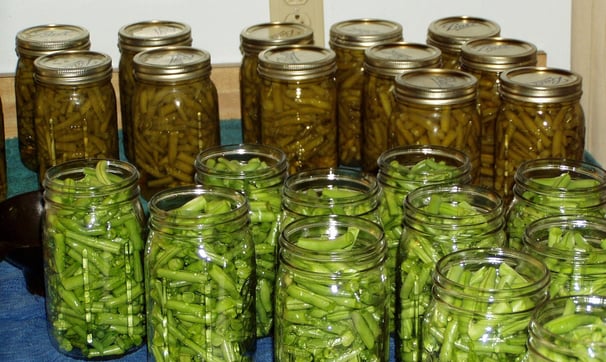Canning and Preserving Food for Long-Term Storage
FOODPREPPINGEDUCATION


In a world where convenience often takes precedence, there's something profoundly rewarding about preserving and canning food for long-term storage.
Not only does it allow us to savor the flavors of seasonal produce throughout the year, but it also empowers us to reduce food waste and become more self-reliant. In this blog post, we will delve into the art of canning and preserving food, exploring its benefits, techniques, and essential tips to ensure your pantry stays stocked with delicious and nutritious treats year-round.
The Benefits of Canning and Preserving
Canning and preserving food is a time-honored tradition that has been passed down through generations. Beyond its nostalgic charm, there are numerous benefits to this practice:
Food Security: In an unpredictable world, having a stockpile of preserved food ensures you and your family will have access to nourishing meals during emergencies or times of scarcity.
Nutrient Retention: When done correctly, canning and preserving can lock in the vitamins and minerals of fresh produce, providing you with essential nutrients even during off-seasons.
Minimizing Food Waste: Preserving food allows you to utilize excess or surplus produce that might otherwise go to waste, promoting sustainable living and reducing your carbon footprint.
Customization: You have complete control over the ingredients, flavors, and seasonings used in preserved foods, catering to personal preferences and dietary restrictions.
Essential Canning Techniques
Water Bath Canning: This method is suitable for high-acid foods like fruits, pickles, jams, and jellies. The food is placed in sterilized jars, covered with boiling water, and processed to destroy harmful bacteria.
Pressure Canning: Low-acid foods such as vegetables, meats, and some sauces require pressure canning to ensure safe preservation. The high temperatures attained by the pressure canner eliminate the risk of botulism.
Pickling: Pickling is a versatile preservation method that involves submerging food in a brine or vinegar solution. The acidity of the brine helps prevent spoilage while imparting unique flavors.
Freezing: While not a traditional canning method, freezing is an easy way to preserve fruits, vegetables, and certain prepared foods. However, be aware of potential freezer burn and limited shelf life.
Tips for Successful Canning
Use Fresh, High-Quality Produce: The key to excellent canned goods is starting with fresh, ripe produce. Avoid overripe or bruised fruits and vegetables, as they may lead to subpar results.
Sterilize Equipment: To prevent contamination and spoilage, always sterilize jars, lids, and utensils before filling them with food.
Follow Tested Recipes: Canning is a science, and deviations from tested recipes can compromise safety. Rely on reputable sources like the National Center for Home Food Preservation for guidance.
Proper Sealing: Ensure that jars are adequately sealed after processing. You should hear a distinct "pop" sound as the jar cools, indicating a successful seal.
Label and Store: Properly label each jar with the contents and date of canning. Store your preserved goods in a cool, dark place to maintain quality and extend shelf life.
Conclusion
Canning and preserving food for long-term storage is a gratifying and practical skill that connects us to our culinary heritage. As you embark on this journey of preserving seasonal goodness, remember to prioritize safety, precision, and quality. With a bit of practice and adherence to best practices, your pantry will soon be filled with a delightful array of preserved treasures, providing you with the taste of summer, autumn, and beyond throughout the year. Happy canning!
